Table of Contents
You have probably already heard that poor execution of exercises can delay progress. However, it may surprise you that there are also many post-workout mistakes that make it impossible to achieve your dream goal. Of course, by these mistakes, we don’t mean that you forget to pull sweaty clothes out of your bag, clean weights at the gym, or wash the shaker after drinking protein. These gaffes don’t distance you from your goal. Unless you fall into a comma after opening your clothing bag or shaker. We are thinking of more fundamental errors concerning diet, exercise, regeneration and general rest. Let’s take a look at the most common of them.
10 things you might be doing that delay getting results
1. You finish the last set and head straight to the shower
You wonder why you should go on a treadmill after a leg workout when you’re all about muscle growth? In this case, it is important to mention the so-called cool down phase. This is part of the workout that will help calm the body, breathe and reduce the high heart rate. You don’t want to run to the shower, rinse off, get out and sweat even more, do you?
However, there are other advantages of the cool down phase. Its main goal is to accelerate the breakdown of energy metabolism by-products, such as lactate or hydrogen ions. These by-products can cause muscle burning and discomfort for several days after exercise. Thanks to the cool down phase, you can speed up regeneration, which is definitely important for all active athletes. If you’re just getting started with exercise and try putting the maximum weight you can carry on a barbell, the cool down phase and a shower probably won’t help your muscle pain. [1-2]
So, you don’t know what a good cool down should look like? There is no universal guide. However, in general, you should choose an activity that involves the whole body. A 10-minute run at a gentle pace, swimming, walking, rowing on a treadmill or riding a bike, can work perfectly. These activities will help to get blood flowing throughout the body, contributing to the “metabolic cleansing”. [25]
If you are interested in more information about the importance of the cool down phase and other training components, you should not miss our article Exercise, Stretching, Warm-Up and Cool Down – Are They Really Important?
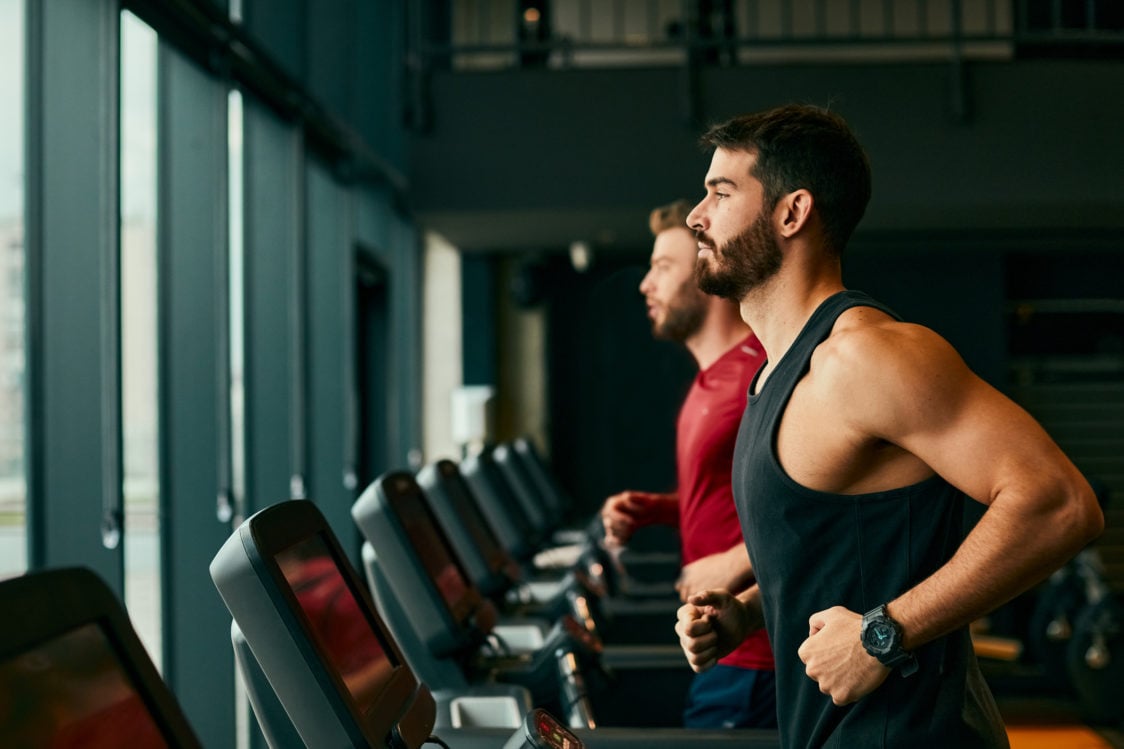
2. You skip static stretching
There are many pitfalls to skipping stretching after training. People with good flexibility and mobility have an advantage as they are able to use the maximum range of motion (ROM = Range of Motion), which makes them stretch in their own way during the exercise itself. If you are not one of these athletes, you should definitely include static stretching in your training routine. In addition to the maximum range of exercise, non-tight muscles can help you improve sports performance, reduce the risk of injury and also ease normal daily activities. [3-6]
Static stretching is ideal to include at the end of training after the cool down phase itself. When performing individual stretching exercises, you should try to get into the position and withstand for approximately 20-45 seconds. The muscle shouldn’t hurt, but it’s okay to feel tension in it. When stretching, try to achieve symmetry by stretching both sides of the body equally. [7-8]
You might be interested in these products:
3. You do not drink enough
It may surprise you how important an ordinary thing like water is. In fact, when the drinking regimen is inadequate, unpleasant signs of dehydration can start to occur, such as headache, lowered performance, fatigue, poor thermoregulation or reduced regeneration. To keep your body sufficiently hydrated, you need to drink approximately 30 – 45ml per kg of body weight every day. If it’s hot outside or you’re exercising and sweating a lot, water intake may need to be even higher. You can tell for yourself that your body has enough fluids by the colour of your urine. It should be slightly yellow. The darker it is, the more dehydrated you are. [9-11]
To help you remember to drink, carry a large bottle of water with you for every workout. If you are sweating a lot, you should replenish electrolytes that you lose from sweating. It’s up to you whether you opt for tablets or a drink supplement. If you don’t like water itself, try adding some low calorie drink flavours, herbs, fruit, BCAA or try different refreshing teas.
Would you like to learn more about a sufficient fluid intake? Then you should not miss our article Hydration Before, During, After Training and How To Avoid Dehydration.

4. You starve after exercise and do not replenish protein
When you finish a good workout at the gym, quality nutrition is one of the most important things the body needs. The body will use carbohydrates to replenish its glycogen stores and protein to support muscle fibre regeneration. This helps the muscles to get stronger and stronger. However, replenishing your energy after exercise is also important if you are trying to lose weight. Even during a diet, it is worthy to keep as much muscle mass as possible, which helps burn more calories. If you don’t nourish the body enough, it’s quite possible that it could start to break down its own muscle mass to provide enough protein for other needs. You certainly don’t want that. [12]
To prevent this, take care of optimal energy intake, which our calculator can help to determine. Adequate intake of protein found in meat, fish, seafood, plant-based meat alternatives (tofu, tempeh, seitan), legumes and the like is also crucial. You should keep within 1.4 – 2 g of protein per kg of body weight. Usually, higher protein intake is intended especially for power athletes. This way, protein will contribute to the strengthening and growth of muscle tissue. [13-14]
Read more about protein sources in our article 20 Foods with Which You Can Easily Add Protein To Your Diet. And if you classify yourself as a vegetarian or vegan, then you might be interested in the protein sources that are further discussed in the article Which Are the Best Sources of Plant-Based Protein and Why Include Them in Your Diet?
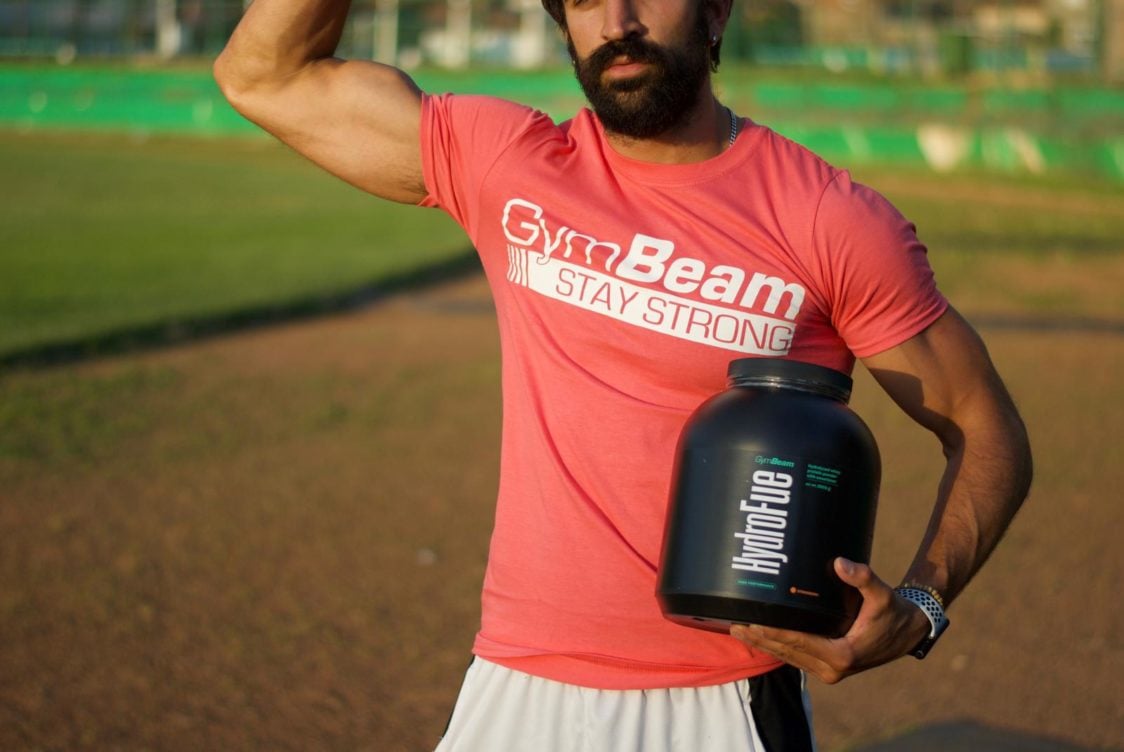
5. You do not care what you eat
Do you think that during your workout you have burnt energy like a nuclear power plant, and you can indulge in whatever you want? Then I guess I’ll disappoint you. The results of studies confirm that people tend to generally underestimate their intake and overestimate their expenditure. If you have a clearly defined fitness goal, you also need to support it with the right diet. With one challenging workout at the gym, the average 65kg woman burns approximately 500 kcal. Then, when she snacks on a pecan pastry with pumpkin latte on top of her intake, she adds 800 kcal to her total. What does this mean? Instead of a 500 kcal deficit through training, this snack got her to an excess of 300 kcal. [15]
It’s the same if you’re trying to gain muscle mass. You really can’t afford to eat anything you think of because of one workout session. Unless you don’t want to gain too much fat, it is ideal to eat approximately 10% more energy than your current caloric intake.
To determine your optimal energy and nutrient intake, take a look at our article How To Calculate Energy and Macronutrient Intake for Weight Loss or Muscle Gain?
6. You are eating too much fat
During the last set, you can’t wait to finish your workout and have a few spoonfuls of your favourite peanut butter in your porridge bowl? Or would you rather run to a fast food joint after your workout for a good burger with fries and tartare sauce?
Unfortunately, neither of the above options is beneficial after a workout. The fats contained in these foods in greater quantities have their own specificities. Of all the macronutrients, they are digested the longest and also slow the absorption of other nutrients. This will keep you satiated for longer, but will not fill your body’s needs for suitable post-workout regeneration. In this period, a well-absorbed energy is crucial. After a workout, therefore, try to supplement quality proteins that you can receive from, for example, whey or vegetable proteins or protein bars. Also, do not forget fast carbohydrates, such as fruit, for example. And if you want to make it easier with your post-workout meal, reach for a complex blend that contains everything the body needs after physical activity.
What’s more, if you’re one of those recreational athletes who goes for a half-hour jog twice a week, you don’t have to worry about post-workout nutrition in any way. Simply stick to the principles of healthy eating and enjoy the joy of movement.
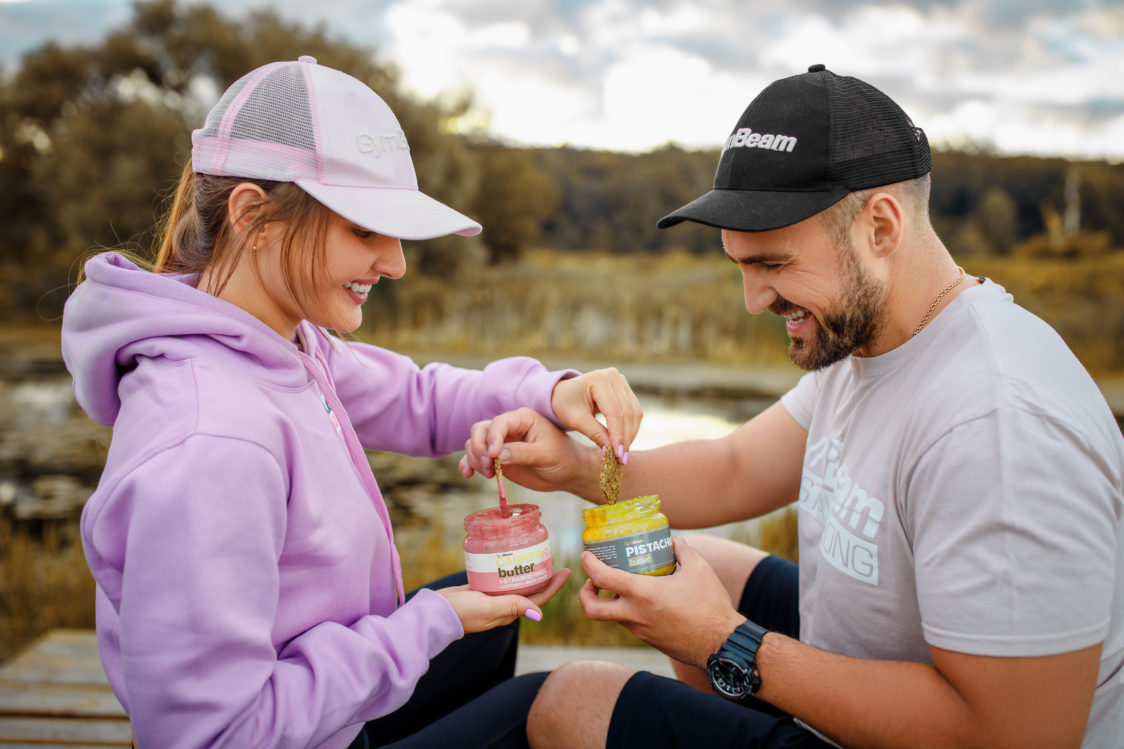
7. You go partying hard
Going for a glass of wine or a single beer on a Friday after work is definitely not something that is going to seriously ruin your physical fitness. But hand on heart, do you really only stay with one glass of wine or beer? Imagine how your body feels after a workout. Its energy reserves are depleted, it’s tired, and all it wants to do is replenish fluids, protein, carbs, and have a good quality sleep. What good will become of it?
After a workout, the body needs a sufficient amount of water, ideally supplemented with the ions you have lost due to sweating. These will help with optimum hydration. However, if you have diuretic alcohol instead, you are more likely to contribute more to dehydration. The body will also lack the necessary proteins for regeneration of muscle damaged fibres after a workout. Instead, the body will struggle to get rid of the toxic alcohol. However, it is not only the lack of protein that is responsible for reducing regeneration, but also the effects of alcohol itself. It slows down muscle repair and also has a negative effect on hormones such as testosterone, which helps with this process. [16-18]
And we haven’t even mentioned how many calories you might find in alcohol:
- Beer – 250 kcal / 0.5 l
- Dry wine – 146 kcal / 200 ml
- Vodka – 109 kcal / 50 ml
- Cuba Libre – 170 kcal / 1 drink
Now, figure out how many calories you’re only able to drink during the evening. Another problem associated with alcohol is decision-making. Have you ever wanted to lose weight and, after your third beer, put your efforts on hold until next week? Similarly, it can influence your judgment when thinking about what you’ll have as an evening snack. Will it be a vegetable salad or a kebab at the station, making the wait for the bus more enjoyable? I’m guessing it’s more the latter. And that’s essentially going to be another couple of hundred extra kcal in the end, which is not the most ideal when losing weight.
It won’t help your body to regenerate if you are smoking and drinking alcohol. In this way, you just flood the body with more toxic substances. Furthermore, the results of studies indicate that these habits reduce muscle protein synthesis as well as oxygen supply to working muscles. This way, it can have a negative effect on both muscle growth and worsen performance. [19-20] [26]
And we’re slowly getting to the next big negative influence of alcohol, and its impact on rest. If you’re partying till morning, you probably know that sleep isn’t going to be the best. In addition to staying up late, this is also due to the fact that alcohol has a negative effect on falling asleep, as well as the quality of sleep itself. Regardless, even during the night, you may well up because you want to use the bathroom or get very thirsty because of dehydration. Not to mention how you’ll feel the next day. In addition to headache or nausea, cravings for salty and high-calorie foods can also catch up with you, which will unnecessarily boost your energy intake.
If you want to grab a beer with your friends, that is no problem. However, after a workout, remember to receive high-quality nutrients in the form of carbohydrates and proteins that will help with regeneration. And, of course, don’t forget a good night’s sleep lasting for about 7 – 8 hours.

8. You avoid natural movement
Natural movement, such as running or walking, is often deliberately avoided by people eager to gain muscle mass. Indeed, they often live in the mistake of losing their muscles through this activity, delaying their goal. What they don’t realize is that natural movement isn’t just for calorie burning, it also helps to reduce the incidence of chronic diseases, obesity, diabetes, cardiovascular disease or high blood pressure and other diseases. [21-22]
Similarly, people who want to lose weight often tend to avoid natural movement. In addition, they feel that by spending an hour at the gym, they have completed their daily activity and can lie on the couch or sit behind the computer for the rest of the day. Then, of course, they are unpleasantly surprised to find that they are failing to lose weight. What seems to be the problem?
We will show this on a simple example of a day in the life of an average 65kg woman, Marie. She used to walk to work and home, which caused her to burn about 488 kcal in an hour and a half. Then she spent an hour and a half working in the garden, burning about 487 kcal. In the evening, she would clean for an hour, burning another 214 kcal. With these activities alone, she burned approximately 1189 kcal per day.
Marie’s decided to lose weight, but she’s not too happy about it. She started going to the gym four times a week – always for at least an hour and a half. During an intense workout, she could burn approximately 700 kcal each time. To make sure she fits everything in during the day, she drives everywhere. In her spare time, she no longer walks, cleans or works in the garden. She feels like she doesn’t have to move any more because she’s been training at the gym. Instead, she reads articles online about miracle diets and transformations. During training days, she burns about 489 fewer kcal than she used to. On non-training days, this difference can be greater than 1000 kcal. Therefore, it is no surprise why Marie’s weight remains stagnant.
An hour at the gym is only a fraction of the day. What’s more important is how much you move in the remaining time. If you are interested in more information about how important natural exercise is and how many calories you burn, you shouldn’t miss the article What Is the Most Important Factor in Losing Weight?
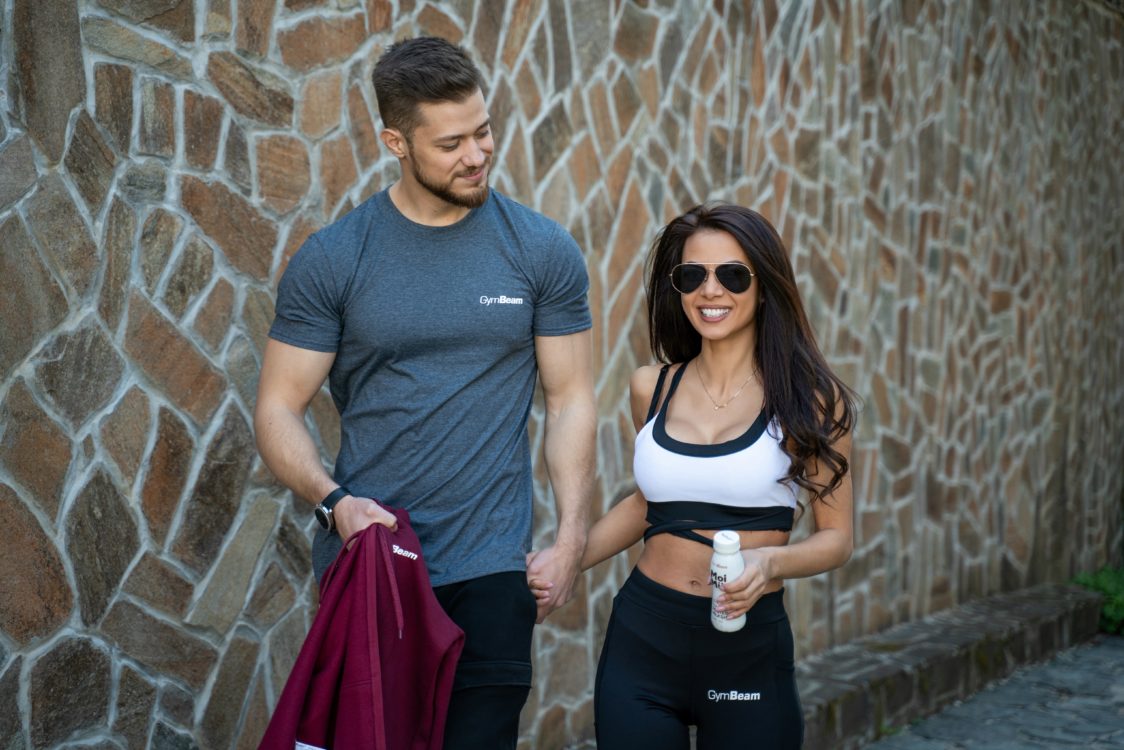
9. You are attending training sessions too soon after one another
If you exercise regularly, you are surely no stranger to the concept of regeneration. This is a process during which the psychological and physical forces that have been compromised by the previous training are fully restored. If the body does not have enough time to regenerate, it does not recover from small tears in muscle fibres. This increases the risk of injury to the soft tissues and indeed the whole locomotor system. So if you have legs workout five times a week and go running as well and ride a bike, you can’t expect to tighten your butt and tone your legs. The body can’t regenerate with that kind of workload, so you’ll probably have leg pain, fatigue, lack of strength, and quite possibly injuries over time. [23-24]
Regeneration should not be seen as an evil that delays your results. On the contrary, it is an essential part of the process to help you reach your destination sooner. If you’re wondering what types of regeneration you can include, don’t miss the article How To Support Regeneration with A Massage Gun and Other Aids?
10. You go to your next training session when you feel like it
From the previous point onwards, this point is the other extreme. If after your first workout, you wait for the inspiration and get a taste for the next workout, there’s a good chance that you won’t continue your fitness journey. If you want visible results to show, you need to be consistent. Build a real training plan and try to follow it as much as you can. Count on the possibility that everything doesn’t work out as planned during the day, and have a shorter HIIT workout in reserve. It allows you to put work in to your body in a few minutes in the comfort of your own home, and you can feel good that you have done some exercise.
For more information on how to build a training plan, see the article How To Build A Good Training Plan – Tips, Workouts and Most Common Mistakes?
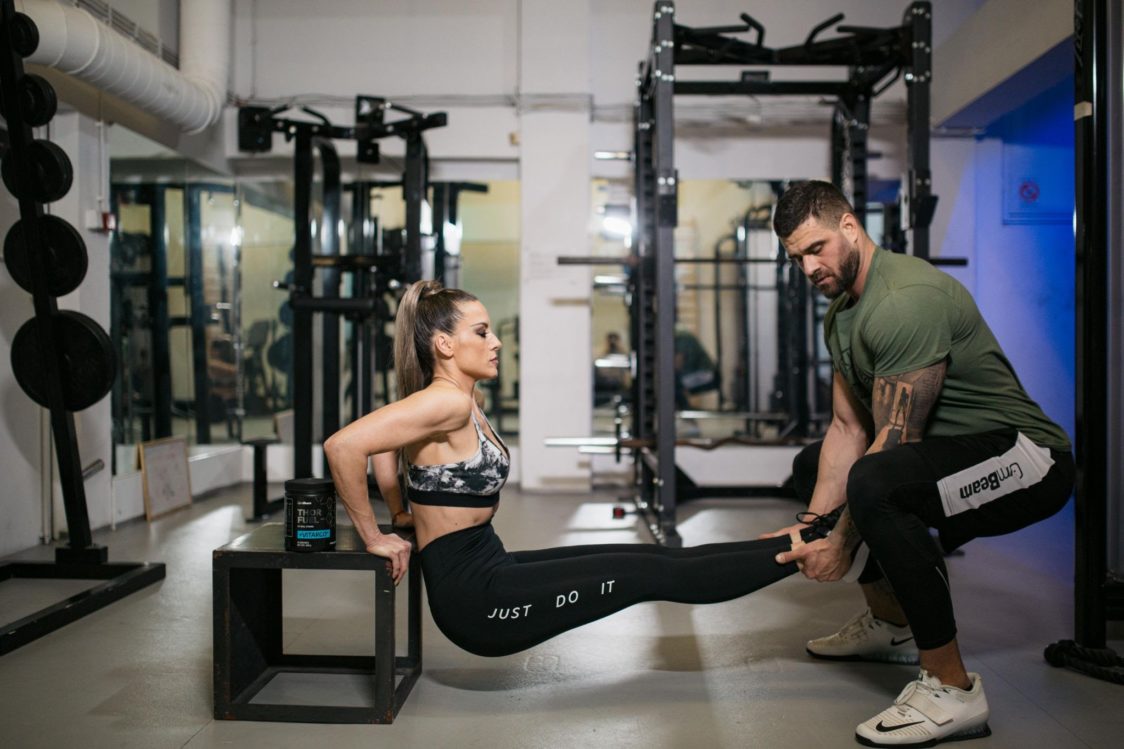
What should you remember?
Everything is not always perfect. But if you are trying to get results from exercise, you should try to minimize post-workout mistakes. They then needlessly sabotage the effort. If you follow our advice on diet, exercise and regeneration, your figure will gradually change for the better and you will see that the joy of achieving your goal is priceless.
Do you have anyone amongst your friends who delay their progress by what they do after a workout? Share this article with them so they can enjoy results too.
[1] Olav Olsen et al. – The Effect of Warm-Up and Cool-Down Exercise on Delayed Onset Muscle Soreness in the Quadriceps Muscle: a Randomized Controlled Trial – https://www.ncbi.nlm.nih.gov/pmc/articles/PMC3588693/#b26-jhk-35-59
[2] Why Cool Down Exercises and Recovery are So Important for Swimmers – https://www.p2life.com/blogs/blog/why-cool-down-exercises-and-recovery-are-so-important-for-swimmers
[3] Paulo Marchetti – Different volumes and intensities of static stretching affect the range of motion and muscle force output in well-trained subjects – https://www.researchgate.net/publication/335473103_Different_volumes_and_intensities_of_static_stretching_affect_the_range_of_motion_and_muscle_force_output_in_well-trained_subjects
[4] Benefits of flexibility exercises – https://www.health.harvard.edu/staying-healthy/benefits-of-flexibility-exercises
[5] What Are the Three Parts of an Exercise Session & Why Are They Important? – https://www.livestrong.com/article/165240-what-are-the-three-parts-of-an-exercise-session-why-are-they-important/
[6] David G. Behm et al. – A review of the acute effects of static and dynamic stretching on performance – https://link.springer.com/article/10.1007/s00421-011-1879-2
[7] Andrey J Serra et al. – Experience in Resistance Training Does Not Prevent Reduction in Muscle Strength Evoked by Passive Static Stretching – https://www.researchgate.net/publication/233839081_Experience_in_Resistance_Training_Does_Not_Prevent_Reduction_in_Muscle_Strength_Evoked_by_Passive_Static_Stretching
[8] Static vs. Dynamic Stretching: What Are They and Which Should You Do? – https://www.hss.edu/article_static_dynamic_stretching.asp
[9] DEHYDRATION AND EXERCISE-INDUCED MUSCLE DAMAGE: IMPLICATIONS FOR RECOVERY – https://www.gssiweb.org/en/sports-science-exchange/Article/dehydration-and-exercise-induced-muscle-damage-implications-for-recovery
[10] S J Montain et al. – Influence of graded dehydration on hyperthermia and cardiovascular drift during exercise – https://pubmed.ncbi.nlm.nih.gov/1447078/
[11] Samuel N Cheuvront et al. – Fluid balance and endurance exercise performance – https://pubmed.ncbi.nlm.nih.gov/12834575/
[12] Chad Kerksick et al. – International Society of Sports Nutrition position stand: nutrient timing – https://pubmed.ncbi.nlm.nih.gov/18834505/
[13] Kevin D. Tipton, Hamilton, D. L., & Gallagher, I. J. – Assessing the Role of Muscle Protein Breakdown in Response to Nutrition and Exercise in Humans – https://doi.org/10.1007/s40279-017-0845-5
[14] Ralf Jäger et al. – International Society of Sports Nutrition Position Stand: Protein and exercise – https://doi.org/10.1186/s12970-017-0177-8
[15] Pierre Chandon et al. – Is Obesity Caused by Calorie Underestimation? A Psychophysical Model of Meal Size Estimation – https://journals.sagepub.com/doi/abs/10.1509/jmkr.44.1.084?casa_token=6Rs8iGbl4vUAAAAA%3AaCwTdD4ajn83vSModU25EeKvO4pFZabilR5wJT5t5W33iaKJKlCu1odQSw1RKtTHBo7CYWu5H9dt&journalCode=mrja
[16] Evelyn B. et al. – Alcohol Ingestion Impairs Maximal Post-Exercise Rates of Myofibrillar Protein Synthesis following a Single Bout of Concurrent Training – https://journals.plos.org/plosone/article?id=10.1371/journal.pone.0088384
[17] Matthew J Barnes – Alcohol: impact on sports performance and recovery in male athletes – https://pubmed.ncbi.nlm.nih.gov/24748461/
[18] Carlo Serra et al. – Testosterone Improves the Regeneration of Old and Young Mouse Skeletal Muscle – https://www.ncbi.nlm.nih.gov/pmc/articles/PMC3598367/
[19] How Smoking Ruins Your Sports Performance – https://www.stack.com/a/how-smoking-ruins-your-sports-performance/
[20] Smoking and Physical Activity – https://my.clevelandclinic.org/health/articles/10643-smoking-and-physical-activity
[21] Christian von Loeffelholz, M.D. and Andreas Birkenfeld – The Role of Non-exercise Activity Thermogenesis in Human Obesity – https://www.ncbi.nlm.nih.gov/sites/books/NBK279077/
[22] Jiangqi Tang et al. – A Device to Increase Non-Exercise Activity Thermogenesis in Adults – https://paahjournal.com/articles/10.5334/paah.53/
[23] Regeneration – https://www.nigms.nih.gov/education/fact-sheets/Pages/regeneration.aspx
[24] Jeffrey B. Kreher et al. – Overtraining Syndrome – https://www.ncbi.nlm.nih.gov/pmc/articles/PMC3435910/
[25] Exercise 101: Don't skip the warm-up or cool-down – https://www.health.harvard.edu/staying-healthy/exercise-101-dont-skip-the-warm-up-or-cool-down
[26] Anne Marie Winther Petersen et al. – Smoking impairs muscle protein synthesis and increases the expression of myostatin and MAFbx in muscle – https://pubmed.ncbi.nlm.nih.gov/17609255/

